- Published 17 Jan 2023
- Last Modified 29 Aug 2023
- 13 min
A Guide to Rocker Switches
Our guide focuses on rocker switches, explaining how to use them and exploring the different types available.

This introductory guide will tell you all you need to know about rocker switches and how they work. We will list some of the most frequently used types and models and give an overview of the applications where they are often used. We will also provide some links to rocker switch accessories available to buy online.
What is a Rocker Switch?
Rocker switches are among the most familiar switch types you will encounter. The definition simply requires that the switching part of the mechanism rocks between two or more positions when pressed. As one end raises, the other lowers. They are also sometimes called see-saw switches.
Rocker switches can be contrasted with toggle or trip switches. With toggle switches, changing the switch position usually involves moving a small lever up or down, where it clicks into place. Rockers are not designed to move around in their housing this way. Instead, they just tilt back and forth around a central pivot point.
Choices of position for a rocker switch will often be limited to on/off, but some types may have three or more options to choose from. It is not uncommon for them to use a central off position, although switches with this feature tend to be more widely used in industrial settings as opposed to domestic ones.
What are Rocker Switches Used for?
As one of the most familiar switch types in the world, rocker switch uses cover a vast range of applications and devices. Most on-off power and light switches found around the home or office will be designed for a rocker or toggle-type operation, with rockers tending to be more common.
They are almost always seen on wall sockets, power outlets, surge protectors and extensions. They are also commonly used on many different sorts of standalone appliances and integrated electrical devices. You will often find illuminated rocker switches with embedded LEDs or similar, although this is by no means always the case - more often than not, basic off-on power rockers are non-illuminated.
Everyday usage examples include:
- Power supplies and control panels
- Household appliances, e.g. dehumidifiers and vacuum cleaners
- Medical equipment and machinery
- HVAC systems
- Hydraulic and pneumatic systems
- Vehicle electronics and dashboards - seat switches, electric windows, defoggers
- Fuse circuits
In most of these applications and many more besides, these switches are primarily chosen for their cost-effectiveness, convenience, and overall ease of operation. They tend to be somewhat wider than lever-type toggle switches, but do not usually stick out as far. They may feature illuminated areas with embedded LED lighting, often coloured red or orange to indicate active power flow.
This means that rockers can often be a better option if physical space is limited (particularly above or in front of the switch), or where it is preferable to keep them lower profile and less obtrusive. Miniature rocker switches are also sold for even smaller install locations. They also tend to be easier to clean around.
How Does a Rocker Switch Work?
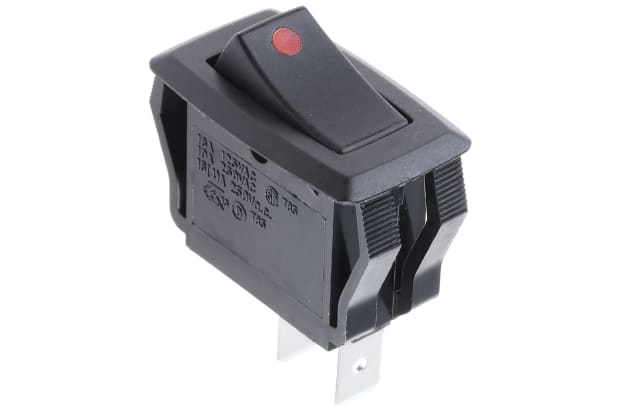
Operation is straightforward, usually requiring only a small amount of downward pressure on one end of the switch to move it between positions. Overall, they tend to be even easier to use than toggle equivalents, requiring little force or physical dexterity to switch them from one position to another.
Depending on the number of positions offered and the manufacturing quality of a given unit, rocker switches can be slightly more prone to temporary sticking between positions than some toggle-style alternatives. To help avoid this, some are designed with integrated spring-loading, meaning that they will automatically return to a neutral position when not being pressed. This is often the case with switches for things like powered window or seat controls in cars.
Because of their simple design, it is easy to augment rocker switches with additional features like indicative lighting. Even cheap versions will often include a simple on-off illumination LED, instantly telling you whether they are currently delivering power (on) or acting as a circuit breaker (off).
Rocker Switch Positions: Poles and Throws
We will take a closer look at several of the different types of rocker switch you can buy in the next section of this guide. Firstly though, it is worth taking a moment to clarify the terminology around rocker pole and throw types.
Most - though not all - are designed for controlling relatively simple circuits in a limited number of ways. They will often just give you the choice between on and off positions. If you need a more complex array of positioning and control options, you will often need to use something like a rotary switch.
Even so, regardless of which switch type you are buying, they will usually be sold according to the number of poles and throws they can switch between.
The most common configurations are:
- Single Pole, Single Throw (SPST)
- Single Pole, Double Throw (SPDT)
- Double Pole, Single Throw (DPST)
- Double Pole, Double Throw DPDT)
The circuitry of the devices or systems you are wiring up, and how you need to control them, will dictate which type of switch you need to buy.
Poles
Poles refer to the number of separate circuits the switch can complete (close) when it is switched in the ON positions. If a rocker delivers or interrupts power to just one circuit, it is a single-pole rocker switch, even if it has multiple ON positions (multi-throw). If it can control two separate circuits, either independently or together (via either one or two ON positions), it is a double pole switch. It can help to think of a double pole rocker as being able to perform the function of two single-pole switches, but from just one button.
Throws
Throws refer to the number of ON positions the switch can move between to close (power) the circuit(s) it is controlling. If it is a simple on-off rocker, it is known as a single throw switch, even if it closes more than one circuit at once (multi-pole). If it has two ON positions - for example, OFF, low power, and high power - it is a double-throw switch, even if it is only controlling a single circuit.
Switch Poles and Throws Examples
- A desk fan has a single rocker switch that turns it either off or on. Because this rocker controls one circuit and has one ON position, it is a Single Pole, Single Throw (SPST) switch
- A similar desk fan has a single rocker switch, but the rocker can select between off, low power, and high-power modes. Because this rocker controls one circuit and has two ON positions, it is a Single Pole, Double Throw (SPDT) switch
- A hairdryer has a single rocker switch that turns it either off or on. When it is on, power is delivered to both the blower motor circuit and the heating element circuit simultaneously. Because this rocker controls two circuits and has one ON position, it is a Double Pole, Single Throw (DPST) switch
- A similar hair dryer has a single rocker switch, but the rocker can select between off, low power, and high-power modes. Because this rocker controls two circuits and has two ON positions, it is a Double Pole, Double Throw (SPDT) switch
Rocker Switch Types - Switching Options
These switches are sold in many different formats and styles, which have different advantages and limitations in various applications and device types. Some of the most common variants are:
- On-off
- On-on
- Illuminated rocker
- Round rocker
- Power rocker
- Momentary
- Pushbutton
- Changeover
- Centre-off switch
- On-NONE-Off / On-NONE-On
- E-switch
- Miniature rocker switch (often sold in mm sizings)
- High inrush rocker switches
In the following sections, we will take a look at some of the above styles in more detail.
On-Off
An on-off (or off-on) switch allows the user to select between on and off positions for power delivery to one or more circuits simultaneously. Components sold as on-off rocker switches will typically have just those two positions available although you can also buy on-on versions for more specific applications.
Illuminated
Many rocker switches feature embedded illumination to show whether or not power is being sent to a circuit in a given position. These sorts of built-in LED indicators on illuminated rocker switches are especially common in applications like power strips and surge protectors. They are also widely found on dashboard displays, instrument panels and control arrays, as well as in some wall-mounted light switches and appliance breakers.
Momentary
Standard rocker switches latch into whichever position you press them into and remain engaged in that position until you switch them the other way. A momentary switch, however, is only engaged when pushed and returns to a default position when not being pressed. It usually does so with the aid of a built-in spring.
Momentary switches may be called push switches or non-latching switches. They can be designed as either normally on or normally off when in their default positions, although off is far more common. They are widely used on many types of intermittent input devices, from keypad controls to electric door and window mechanisms.
Changeover
A changeover or transfer switch (sometimes written as change over) is typically used to divert Voltage to or from one circuit to another. They are most often used in power supply and mains grid functions, allowing the user to select between one input source - for example, mains power - to a secondary source, such as a backup generator. They can be manual or automated. Some models may effectively function as two simultaneous circuit breakers, flipping in opposite directions in the same instance.
Centre-Off
Another type of rocker switch has a central OFF position. This usually means it will have (at least) two ON positions, typically at either side of the see-sawing mechanism. They may be called on-off-on switches, although centre-off is the preferred terminology, as it is less ambiguous. This type of switch can also be momentary, although in most cases they are designed for fully manual operation in all positions.
Accessories
There are many handy rocker switch accessories and mounting devices sold online in the UK and elsewhere. Most varieties of accessory are intended to make installation and use of these switches easier and safer or to act as additional design features for switch housings and displays.
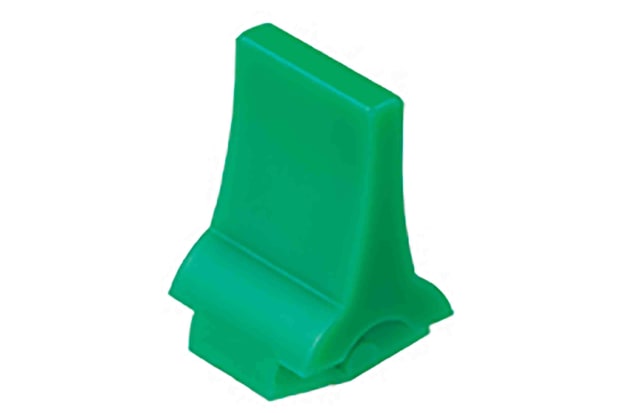
Actuator Tools
Rocker switch actuator tools are designed to make the switches themselves easier to remove, insert, or operate. Various types of switches may need a separate actuator tool for removal or insertion of a new rocker, without necessarily replacing the entire unit. In some cases or models, users may have the ability to replace a standard actuator with a more convenient lever-type mechanism or similar.
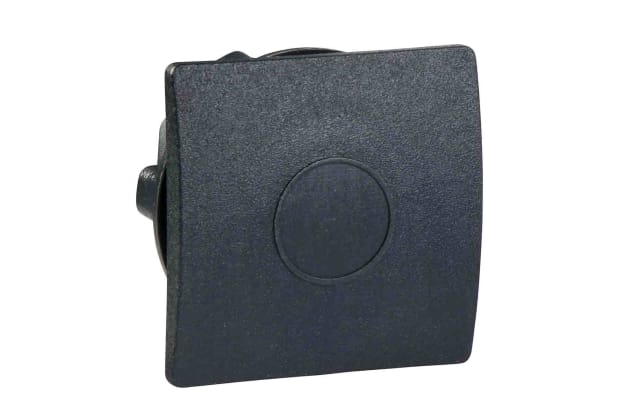
Rocker Switch Blanking Plug
A rocker switch blanking plug may also be referred to as a switch dummy cover, switch cap or similar. They are used to cover or replace an existing switch actuator or a cut-out gap where a switch actuator was previously installed. This is usually done as a safety or convenience feature.
Depending on the model and actuator type, a rocker blanking plug may allow for easier and safer operation of the switch, or to reduce the risk of accidental operation. They will often be IP65 or IP68 rated against dirt and moisture ingress and are especially common for protection on home electrical circuits and devices with a fuse.
Common colours for rocker blanking plugs include black and red, and they are often sold to suit rockers of a specific size (in mm or cm).
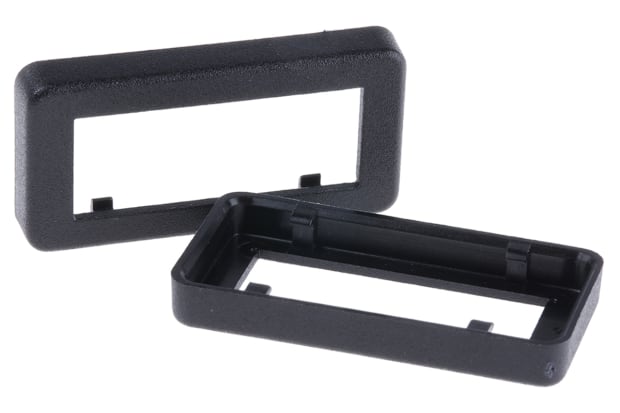
Rocker Switch Bezel
Rocker switch bezels are the frames that fit around the switch when it is installed. They help to hold the switch in place, prevent dirt or moisture ingress, and protect the wiring behind the switch. They also allow for neater installation of the switch in its housing and help to prevent accidental operation. Both circular and rectangular switch bezels are widely available, and generally cheap to buy online.
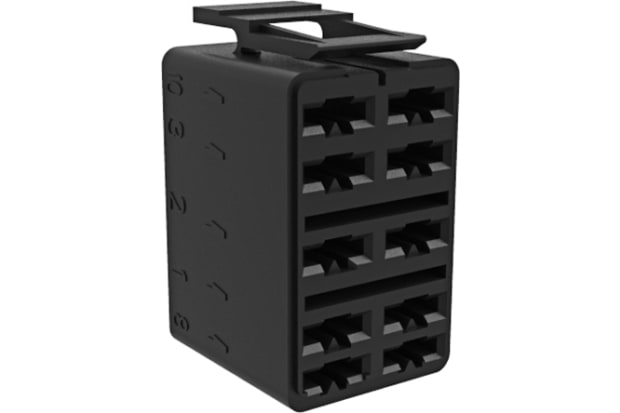
Rocker Switch Connector
A rocker switch connector is a key part of the assembly behind the switch. Rocker switch connectors act as an intermediary linking device between the main circuit wiring and the switch/actuator assembly.
The connector accepts, divides and routes the incoming leads from the circuit wiring array on their reverse side, while on the outward-facing side they enable the attachment of the rocker switch itself via a series of plug-in terminals. Once the full assembly is attached in this way, the rocker switch actuator can be fitted, which will then be able to close or open circuit connections via the leads linking it to the main electrical system.
Rocker switch connectors can be designed either to house single switches in a dashboard or console or to allow for multiple switches and resistors in a larger array. There are many different types and configurations of rocker switch connector available, usually at low cost. They are relatively cheap and straightforward components that are widely available and simple to install.
They may include built-in LED diodes ready to wire up to the main circuit, which will allow for lighting in the rocker switch to indicate its current on/off position. You will usually need to buy a suitable actuator separately.
Common models include standard push-in, plug-in or snap-in switch connectors with locking tabs, as well as quick-release spade connectors, flag terminals, and butt splice terminals. Plexo sockets are a specialist type of rocker switch connector designed for use in outside and exposed environments. They are usually IP65 or IP68 rated against moisture and dirt ingress, and feature quick disconnect functions as well as optional socket covers and modular flush-mount or surface-mount assemblies.
You should always check the manufacturer specifications for more detailed information on its compatibility with specific switch connector types and mounting styles.
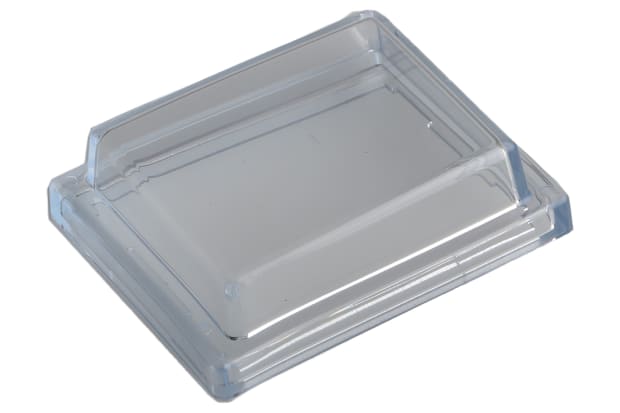
Rocker Switch Boots
Rocker switch boots are rubber or plastic covers installed over switch actuators to help prevent particle or moisture ingress into the workings of the switch. They are common in industrial settings and other types of challenging environments. Switch boots are usually transparent and will typically be highly flexible to allow for easier operation of the switch.
Most will give the switch a defined IP rating when installed (often IP65 or IP68), as stated in the product specifications. Less flexible protective covers are also sold, which may be designed to be removed (or flipped up) before accessing a switch. These are typically referred to as rocker switch covers, whereas a boot almost always implies a malleable rubber protector.
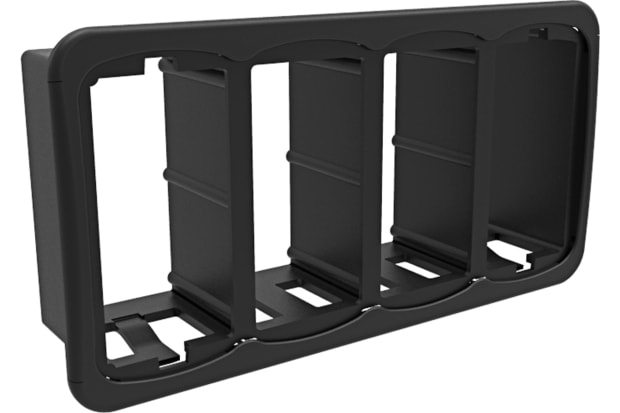
Rocker Switch Mounting Panels
Rocker switch mounting panels are the housing assemblies that hold the switch mechanisms and their internal wiring connections when installed. They are often found on wall-mounted switches which have been recessed, although more or less any type in a dashboard or control panel will have some sort of mounting panel around it.
Mounting panels help to hold the switch securely in place and protect the wiring behind the actuator. Like the rockers themselves, they can be bought in a wide range of colours including black, white, red, green, orange, and clear or transparent.